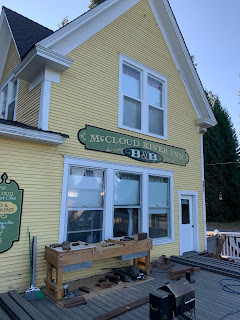...when national circumstance imitates art...
To escape the drumbeat of the both the news media and social media, I hopped on Enrico, the Yamaha and headed out to cruise the Pacific Coast Highway. The rhythm of the road and the waves, I was sure, would carry me to a happy place.
Often, when I ride, a soundtrack will filter into my mind and accompany me on my journey. Usually – whether it’s Sinatra or the Boss, Mozart or the Beatles – I don’t know why the playlist is what the playlist is. I just enjoy the melding of melody and that road rhythm.
Today was different. Today, the tunes came from “West Side Story.” (Music by Leonard Bernstein. Lyrics: Stephen Sondheim. Ghostwritten by William Shakespeare.) We’d viewed the dazzling 1961 film the night before. Lyrics were echoing as I descended Sonoma County’s Colman Valley Road from Occidental into the marine-layer refrigerator that always is California’s Highway 1 in July.
The story lingered.
I do a lot of thinking on the motorcycle. Especially when fog or overcast mutes the scenery. Sometimes I come up with a new idea like how 2 plus 2 can equal 7; sometimes, I simply try to figure out the hand that the world has been dealt.
This day would be the latter.
Arthur Laurents’ “Westside Story,” like William Shakespeare’s “Romeo and Juliet,” is a tearful tale about forbidden love and ultimate loss. (If you haven’t seen the film lately, take time to view it so I don’t have to provide an inadequate synopsis here.)
Ultimately, whether it is the Montagues and the Capulets or the Jets and the Sharks that allow their blindness and hatred to prevent them from sitting across the table and simply discussing, the result is the same. An irreversible tragedy takes place, and only then do the opposing parties decide to seek some sort of common ground.
Somewhere between Point Arena and the eastward turn-off to CA 128 along the Navarro River – and while voicing Sondheim’s lyrics to “Somewhere” in my helmet – it dawned on me. (Granted, maybe this was simply another example of 2 and 2 equaling 7.) But here goes:
The differences and perceptions separating the families in Romeo and Juliet (1594-95) or gangs in Westside (1961) are not all that different from those dividing our nation’s left and our nation’s right (2020). Sadly, the irreversible tragedy that is about to befall us is far more crucial – far more devastating – than the mere loss of a handsome, ill-fated lover.
No. The loss will be that of what once was our grand Republic.
I believe that we can each play a hand in diverting the tragedy.
(c) 2020
Church of the Open Road Press








































